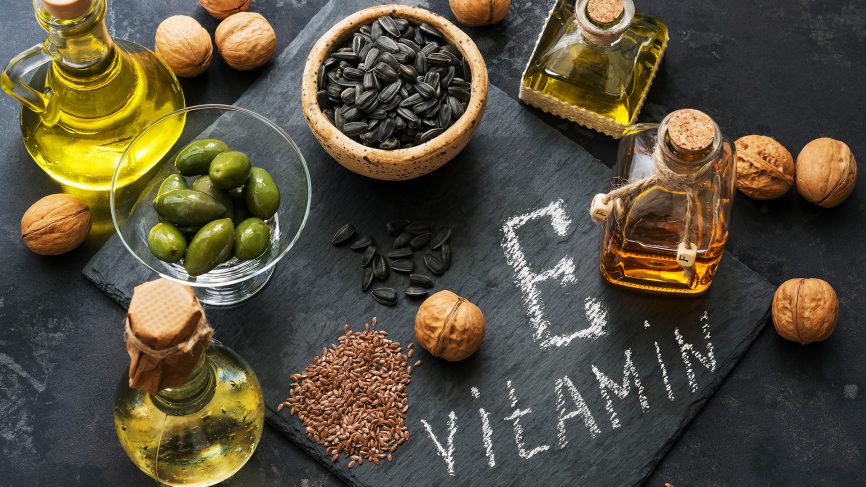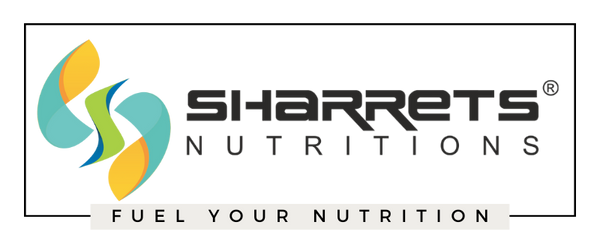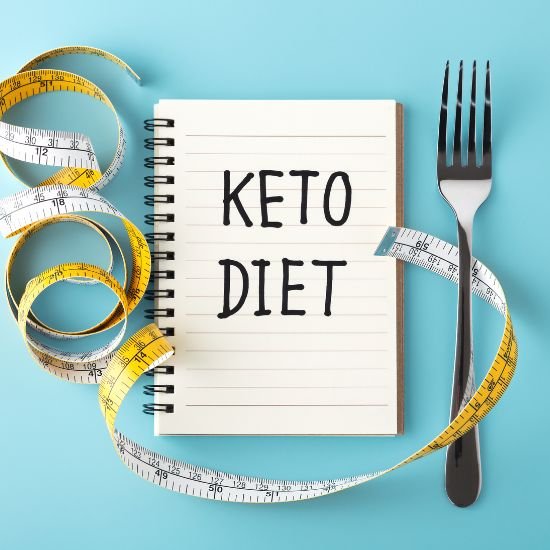
Vitamin e benefits and it's side effects.
Share
Vitamin e benefits , Vitamin e side effects , Vitamin e rich foods , Vitamin e deficiency & Recommended daily intake of Vitamin E.

The vitamin that plays the role of antioxidant, preventing free radical damage to specific fats in the body that are essential for your health and naturally slowing aging .
Other vitamin E benefits include its role as an important fat-soluble vitamin that’s required for the proper function of many organs, enzymatic activities and neurological processes.
Benefits of consuming more Vitamin E rich foods can include preventing and treating heart & blood vessel diseases , such as high blood pressure, chest pains and blocked or hardened arteries.
The source of Vitamin E is Plant foods , including certain oils , grains , nuts , fruits & wheat germ.
It’s also available as a supplement. So let’s find out how you can get all these great vitamin E benefits, along with the best vitamin E foods, supplements and the signs of a vitamin E deficiency.
Top 11 Vitamin E Benefits
What are the top vitamin E benefits? Supplementing and consuming vitamin E-rich foods has been found to be associated with some of the following health benefits:
- Balances Cholesterol
- Fights Free Radicals and Prevents Disease Development
- Repairs Damaged Skin
- Thickens hair
- Balances Hormones
- Improves Vision
- Helps PMS Symptoms
- Helps People with Alzheimer’s Disease
- May Lower Cancer Risk and Improve Effects of Medical Treatments
- Improves Physical Endurance and Muscle Strength
- Important During Pregnancy for Growth and Development
Vitamin E rich Foods
Most of the people are not aware that “E-Vitamin ”is a collective description for 8 compounds, 4 tocopherols & 4 tocotrienols.
Getting ample Vitamin E seems to be especially critical for the very young (fetuses or infants), the elderly, and women who are or may become pregnant.
As per USDA, the recommended daily allowance for collective vitamin E is 15 mg /day (or 22.5 IU) for adults.
- Sunflower seeds : 1 cup — 33.41 mg (220 %)
- Almonds : 1 cup — 32.98 mg (218 %)
- Hazelnuts: 1 cup — 20.29 mg (133 %)
- Wheat Germ: 1 cup plain, uncooked — 18 mg (120 %)
- Mango: 1 whole raw — 3.02 mg (20 %)
- Avocado: One whole raw — 2.68 mg (18%)
- Butternut Squash: 1 cup cooked and cubed squash — 2.64 mg (17 %)
- Broccoli: 1 cup cooked — 2.4 mg (12 %)
- Spinach: ½ cup cooked or about 2 cups uncooked — 1.9 mg (10 %)
- Kiwi: 1 medium — 1.1 mg (6 %)
- Tomato: 1 raw — 0.7 mg (4 %)

Different Forms of Vitamin E
There are 8 major isomers of vitamin E. Most of the health benefits of vitamin E described above come from studies involving only form of vitamin E called alpha-tocopherol, which is only one of eight forms.
Recently, researchers have focused more attention on other forms of vitamin E as well, with particular focus on tocotrienol, which some consider the “the 21st century vitamin E.” (9) Alpha- and beta-tocotrienols have been found to be the least active forms overall, while delta- and gamma-tocotrienols are the most active. Recent findings suggest that it’s not that alpha-tocopherol is harmful, but it may interfere with absorption of other forms of vitamin E, including other tocopherols and tocotrienols that are needed for heart and cognitive health.
As per the the Linus Pauling Institute @ Oregon State University:“Vitamin E is actually composed of 2 structurally similar compounds, tocopherols and tocotrienols.
Each compound is comprised of 4 components, each of which has distinct molecular structures. Each component is referred to as an isomer (or vitamer) of vitamin E. Each isomer of vitamin E has unique properties, health benefits, characteristics, and attributes, with important applications when formulating food or beverage products.”
Given the benefits of different vitamin E isomers that have been discovered, today there’s a push to rethink the way that vitamin E is labeled and described in research studies. When only form of vitamin E is studied (usually only the isomer alpha-tocopherol), many believe that any benefits revealed from the study should not be attributed to “vitamin E” given that without the other isomers it’s not actually vitamin E in its full form that’s being studied. Steps are also being taken to educate the public about benefits specifically associated with tocotrienols isomers, which include protection against a wide range of common, chronic diseases due to having unique antioxidant and anti-inflammatory potential.
Tocotrienols have also been found to have anticancer and anti-tumor abilities, lipid and cholesterol-lowering effects, and protective effects that impact the brain, neurons, cells and immune system.
So what does all this mean regarding the kinds of vitamin E in your food ? It’s best to get a variety of vitamin E isomers from your diet, given that different types have different benefits. Tocotrienols have proved to contain some exceptional benefits that are not shared by other forms. Today, the brightest spot for tocotrienol research is in chronic conditions, such as cardiovascular disease, metabolic syndrome, cancer and osteopenia/osteoporosis. Sources of tocotrienols are not as widely available or popular in most people’s diets however.
These include annatto seed, coconut, barley, or commercially extracted palm oil and rice bran oil.
Finally, it’s also best to obtain vitamin E naturally from foods, rather than getting synthetic vitamin E from low-quality supplements or processed foods, which is usually in the form of either gamma-tocopherol or alpha-tocopherol. The vast majority of synthetic vitamin E found in supplements is not the type that’s actually found in nature and not necessarily helpful for preventing disease and boosting health. That’s why the best way to get vitamin E benefits is by consuming natural vitamin E foods.
How to Get ample of the Different E-Vitamin Isomers (Including Tocotrienols): Most diet or food sources in the typical person’s diet are high in vitamin E isomers like gamma-tocopherol and to a lesser degree alpha-tocopherol.
This is especially true of oils derived from major crops like sunflower , soybean, corn, cottonseed and sesame seed, which provide about 80 % of the E vitamin isomers most people in the United States get from their foods. These oils contain between 3 to 5 times as much gamma-tocopherol compared alpha.
As mentioned above, it’s tough to get tocotrienols from your food or diet, as sources are far less common or available. The Linus Pauling Institute suggested aiming for small amounts of tocotrienol vitamin E near 140 mg per day, with an average effective dose for immune protection and other benefits considered to be between 200 to 400 mg per day.
Here are tips on finding the best sources:
Although it’s very hard to find at this time, the seed of the annatto tree (Bixa orellana), which is a tropical plant, contains very high levels of tocotrienols, of which 90% are delta-tocotrienol and 10% gamma-tocotrienol.
Other good sources are palm oil, rice oil & rice bran oil, along with walnuts , peanuts and pecans.
Some others that are more common include rye , oats, and barley cereal grains, although these don’t have as much as other, rarer sources.
If you’re looking to increase the amount of all isomers vitamin E that you’re consuming in a day, there are lots of ways to get creative using these foods. Try adding seeds or nuts to your oatmeal , cereal or salad. You can also snack on raw nuts or make your own grain-free granola.
Add a boost of vitamin E to your lunch or dinner by having a Kale or spinach salad; add in tomatoes or even fresh fruit like papaya. If you’re looking to have a healthy, vitamin E-heavy snack, try a sliced apple with peanut butter or smashed avocado on whole grain sprouted toast.
Another easy way to get some vitamin E benefits from your diet is to add just a tablespoon of wheat germ oil to any recipe.
Recommended Daily Intake of Vitamin E
The recommended dietary allowance for vitamin E (including different isomers), according to the USDA, includes the amount you get from both the food that you eat and any dietary supplements you take. The daily intake is measured in mg & IU. Recommendations for different age groups are listed below:
Children:- 1–3 years: 6 milligrams per day (9 IU)
- 4–8 years: 7 milligram per day (10.4 IU)
- 9–13 years: 11 milligram per day (16.4 IU)
- 14 years and up: 15 milligram per day (22.4 IU)
- Pregnant: 15 milligram per day (22.4 IU)
- Breast-feeding: 19 milligram per day (28.5 IU)
Males:
-
14 years and up: 15 milligrams per day (22.4 IU)
The tolerable upper intake levels are the highest amount of a vitamin that most people can take safely. These high doses can be used to treat a vitamin E deficiency, and it’s important to speak to a healthcare professional or doctor before taking more than these upper intake levels.
- 1–3 years: 200 milligrams per day (300 IU)
- 4–8 years: 300 milligrams per day (450 IU)
- 9–13 years: 600 milligrams per day (900 IU)
- 14–18 years: 800 milligrams per day (1,200 IU)
- 18 years and up: 1,000 milligrams per day (1,500 IU)
Keep in mind that because vitamin E is fat-soluble, supplements work best when they’re absorbed with food, and the American Heart Association recommends obtaining antioxidants, including vitamin E, by eating a healthy and well-balanced diet that’s high in fruits, veggies and whole grains. Getting your vitamins from the food you eat is always a better alternative than using a supplement because it’s difficult to over-consume vitamin E when getting it from your regular diet.
Vitamin E Deficiency Symptoms
Vitamin E deficiencies (meaning intake of all isomers) have long been thought to be rare, and when they do happen, it’s commonly believed that it’s almost never caused by a poor diet. However, some experts believe that many people today are actually not getting enough vitamin E from their diets in natural form, especially too little tocotrienols.
There are specific situations that may lead to a vitamin E deficiency due to malfunctions in terms of how nutrients are absorbed. A premature infant who is born weighing less than 3.5 pounds is in danger of a vitamin E deficiency, but a pediatrician who specializes in the care of newborns will typically evaluate the nutritional needs of an infant to help spot and treat this early. People with fat absorption problems, which is a common problem for those who struggle with inflammatory bowel disease, may also struggle with a vitamin E deficiency in some cases.
People who have an issue with their dietary fat levels are at an increased risk because as mentioned above, fat is needed for the absorption of vitamin E. This includes anyone who has been diagnosed with cystic fibrosis, has had gastric bypass surgery, or people with malabsorption problems, such as Crohn’s disease,liver disease or pancreatic insufficiency. Deficiency symptoms include loss of muscle coordination and impaired vision and speech.
Vitamin E Side Effects
Vitamin E benefits most healthy people when taken orally or applied directly to the skin.
Most of the people’s doesn’t experience any side effects when taking the suggested or recommended dosage , but in high doses there are adverse reactions that have been recorded.
Vitamin E may be unsafe when taken in very high amounts, especially for individuals who have heart disease or diabetes. If you suffer from these health issues, do not take doses of 400 IU per day or more.
Some studies demonstrate that taking high doses of vitamin E, which is between 300 to 800 IU each day, might increase the chance of having a serious stroke called hemorrhagic stroke by 22 %.
One serious side effect of too much vitamin E is an increased risk of bleeding, especially in the brain.
Avoid taking supplements containing vitamin E or any other antioxidant vitamins immediately before and following angioplasty, a type of heart procedure. These vitamins seem to interfere with proper healing, so speak to your doctor or health care professional if you are undergoing this kind of procedure and taking any Vitamins or supplements.
Supplementing with very high levels of vitamin E could potentially lead to the following health concerns:
-
heart failure in individuals with diabetes
-
worsening bleeding disorders
-
increasing the chances that neck , head & prostate cancer will return.
-
increasing bleeding during & post surgery
-
increasing chance of death after a stroke or heart attack .
One study suggested that vitamin E supplements can also be harmful to females who are in the early stages of pregnancy. Females who took vitamin E supplements during their first eight weeks of pregnancy showed an increase of congenital heart defects.
High doses of vitamin E can also sometimes lead to diarrhea, stomach cramps, nausea , fatigue, weakness, headache, blurred vision, rash, bruising and bleeding.
Topical vitamin E may irritate some people’s skin, so try a small amount first and make sure you don’t have a sensitivity.
Relationship with Other Nutrients and Interactions
Vitamin E supplements can slow down blood clotting, and when you use medications that also slow clotting, you may increase the chances of bruising and bleeding. Some medications that slow blood clotting include aspirin, clopidogrel, ibuprofen and warfarin. Warfarin (Coumadin), in particular, is used to slow blood clotting. Taking vitamin E with warfarin can increase your chances of bruising and bleeding, so be sure to have your blood checked regularly in order to regulate your dosing.
Medications that are used for lowering cholesterol may also interact with vitamin E. It’s not known if taking vitamin E alone decreases the effectiveness of some cholesterol-lowering medications, but it does seem to affect cholesterol when taken with beta carotene, vitamin C and selenium.
Final Thoughts on Vitamin E Benefits
Vitamin E benefits the body by playing the role of an antioxidant. Being a fat-soluble vitamin, vitamin E benefits include its role in proper functioning of many organs, neurological processes and enzymatic activities .
-
Vitamin E is a collective description for 8 compounds, 4 tocopherols & 4 tocotrienols, and they provide different vitamin E benefits. It’s best to get a varieties of vitamin E isomers from your food , given that different types have different benefits.
-
Vitamin E benefits include balancing cholesterol, fighting free radicals, preventing disease development, repairing damaged skin, thickening hair, balancing hormones, helping PMS symptoms, improving vision, helping people with Alzheimer’s, potentially lowering cancer risk and improving effects of medical treatments, and boosting physical endurance and muscle strength.
-
Vitamin E is available or found only in plant foods, including certain oils, nuts, grains,fruits and wheat germ. It’s also available as a supplement. Some of the top vitamin E foods you can eat to get these vitamin E benefits include sunflower seeds, hazelnuts, almonds, wheat germ, avocado, mango, butternut squash, broccoli, spinach, kiwi and tomato.
-
Vitamin E benefits the mother and child during pregnancy as well, as it’s a vital vitamin for growth and development.
-
Vitamin E deficiency symptoms include include loss of muscle coordination and impaired vision and speech.
-
Vitamin E may be unsafe when taken in very high amounts, especially for people who have conditions such as heart disease or diabetes. If you suffer from these health issues, do not take doses of 400 IU per day or more.

To Supplement your daily Vitamin E requirements , you may take Sharrets – Natural Mixed Tocopherols at www.sharrets.com









